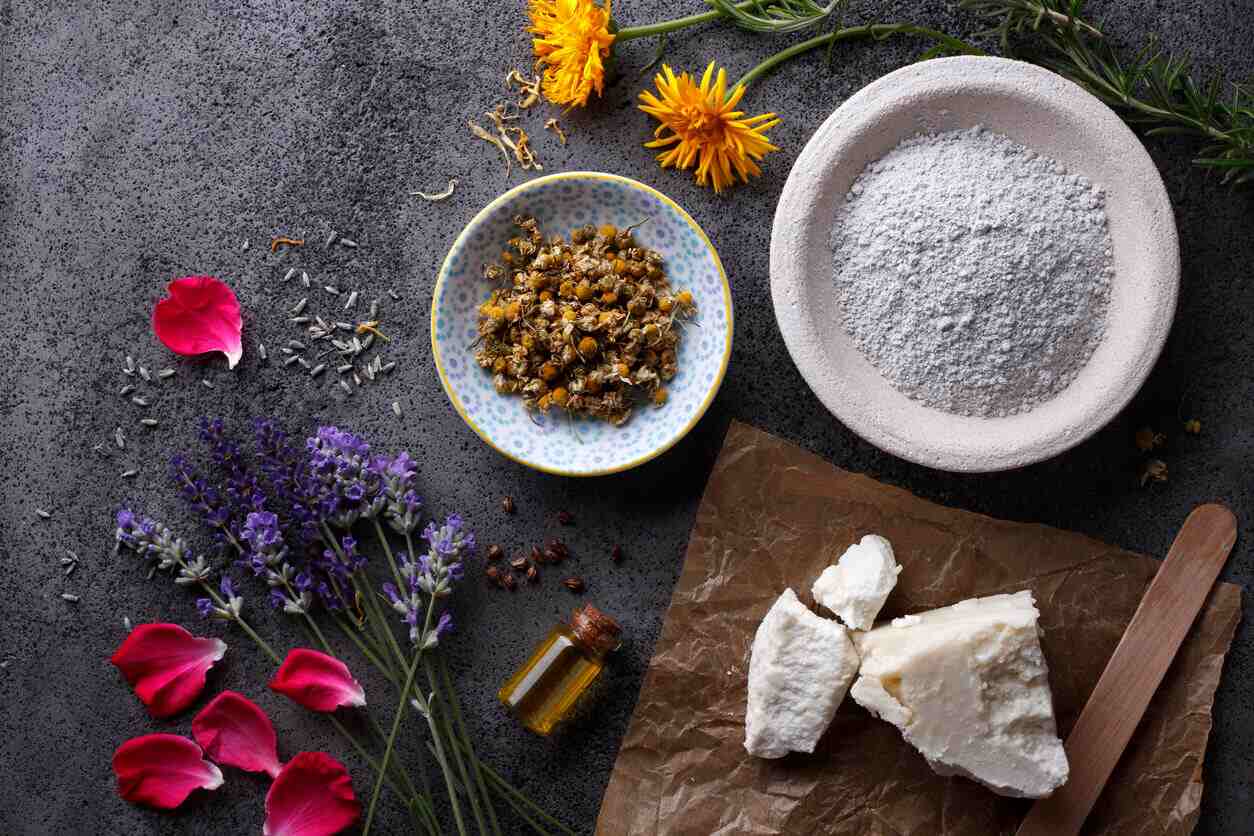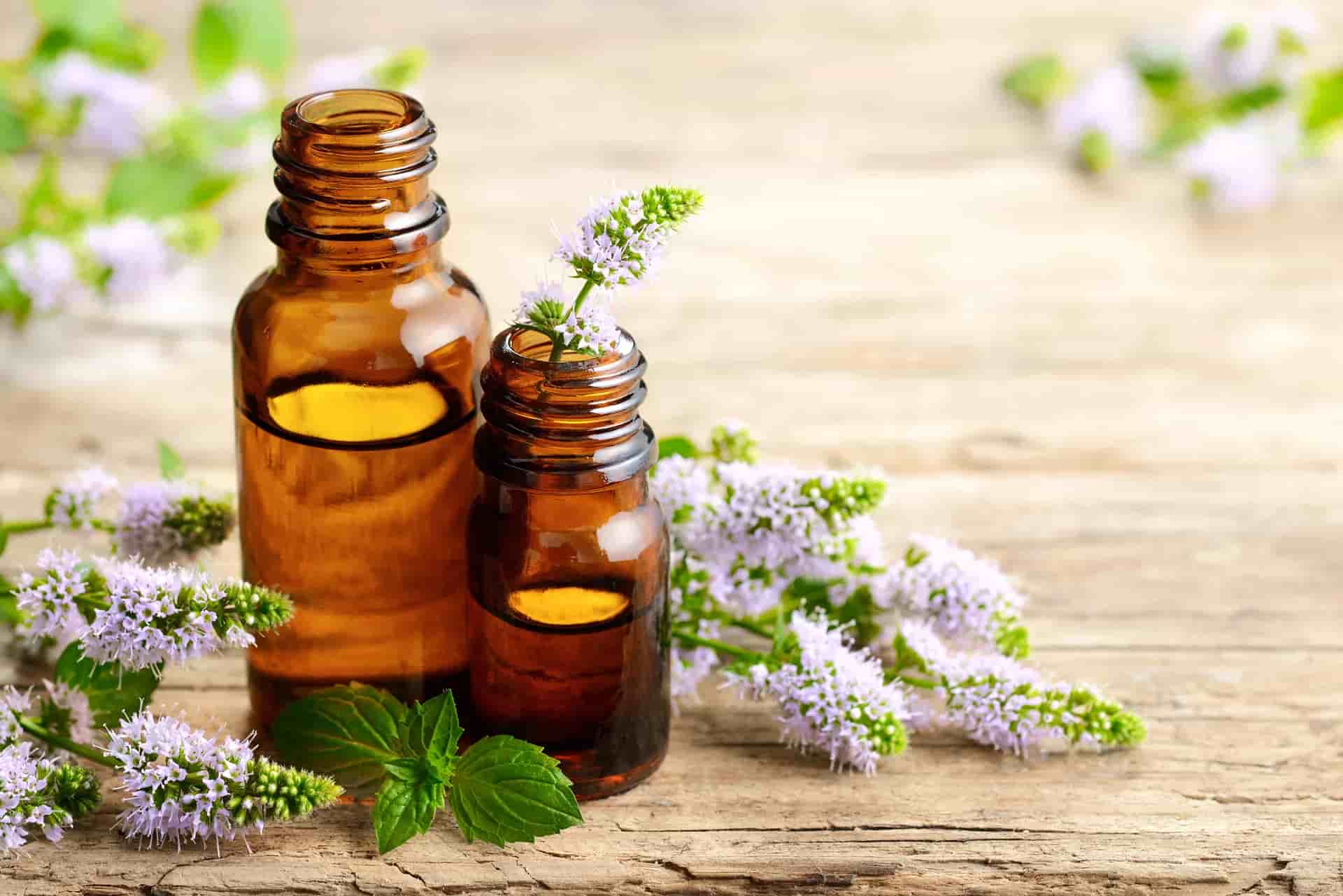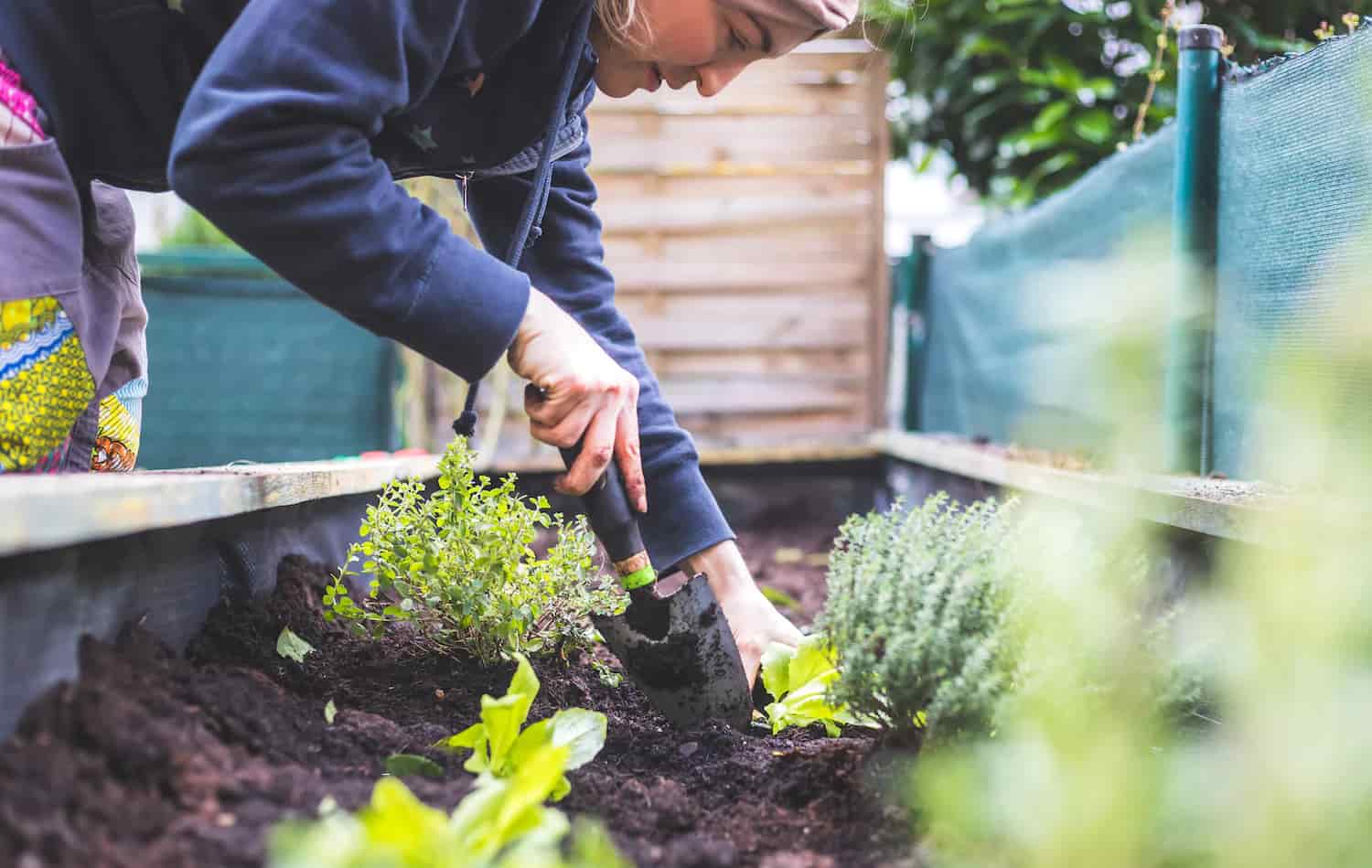
Chamomile Flower Benefits: From Blooms to Bedtime Bliss
Written by Rebecca Younger, CH, CDShare
Step into the calming world of chamomile (Matricaria chamomilla L.), a small flower with a blooming reputation. Its uplifting white petals and golden centers resemble tiny suns, and its fragrance evokes the crisp scent of apples and meadow air.
For generations, people have leaned on the chamomile plant not only as a medicinal herb but as a daily comfort. Whether you are drinking chamomile tea, applying chamomile oil in aromatherapy, massage, or reaching for a tincture, this daisy family flower has a knack for helping us slow down, settle in, and restore balance. From ancient healing temples to your kitchen cabinet, chamomile flowers continue to shine as a soothing presence for digestion, sleep quality, skin health, and mental well-being.
Understanding Chamomile’s Botanical Heritage
Chamomile belongs to the Asteraceae family, alongside sunflowers and marigolds. This explains its sunny look and hardy growth habit. Of the many related plants, two types stand out in herbal medicine. German chamomile (Matricaria recutita) is an annual that grows tall and airy, with hollow cone-shaped centers. When distilled, its oil turns a striking blue, a sign of compounds studied supporting a healthy inflammatory response. Roman chamomile (Chamaemelum nobile) is a low-growing perennial with solid flower heads and a sweeter scent. Its blossoms are traditionally prized for relaxation and mild sedative qualities. Both share the familiar apple-like aroma that rises from a cup of chamomile tea.
A Healing History That Spans Civilizations
Chamomile’s story is stitched into the fabric of human history. The ancient Egyptians linked it with their sun god Ra, praising its golden center and radiant energy. Greek physicians like Dioscorides recommended chamomile for fevers, women’s health, and digestive complaints. Monks in medieval Europe cultivated the chamomile plant in cloister gardens, using chamomile extract in tinctures and chamomile ointments. They even scattered dried flowers on stone floors to freshen the air and lift the spirit. By the 19th century, chamomile tea had become a household staple in Europe and beyond, loved for its gentle taste and versatile benefits. Unlike the buzz of green tea or stronger medicinal plants, chamomile became the cup people reached for when they wanted calm and comfort.
Chamomile and Digestive Wellness
One of the most recognized chamomile flower benefits is its ability to ease the belly. Drinking chamomile tea after a meal is a time-honored ritual for occasional bloating or an upset stomach. Apigenin and bisabolol, two well-studied chemical constituents of chamomile flowers, are known for their soothing effects on the digestive tract.
Chamomile’s digestive support includes:
- Easing bloating by helping gas move through the digestive system
- Calming cramping with natural antispasmodic effects on intestinal muscles
- Soothing irritation through properties that soothe the gut lining and support a healthy inflammatory response
- Supporting gut balance by encouraging a healthy environment for beneficial flora
When the stomach feels unsettled, chamomile often proves to be the flower that helps restore balance.
 Calming the Mind and Supporting Sleep
Calming the Mind and Supporting Sleep
Chamomile is often called a bedtime herb for good reason. Compounds in the flowers gently influence the nervous system, helping to settle the mind and prepare the body for rest. Apigenin, a flavonoid abundant in chamomile, interacts with receptors in the brain associated with relaxation.
Chamomile’s calming benefits include:
- Encouraging relaxation by gently easing tension in the nervous system
- Improving sleep quality by supporting natural sleep cycles
- Soothing occasional anxiousness with properties that gently soothe frazzled nerves
- Promoting nightly rituals that help signal to the body that it's time to rest
Instead of forcing drowsiness, chamomile helps guide the body back into its natural rhythms, making it one of the most beloved plants for those seeking steady, restorative sleep.
Chamomile for Radiant Skin
Chamomile is just as helpful on the outside as it is inside. For centuries, people have turned to chamomile oil, chamomile extract, and herbal-infused body oils to keep skin calm and nourished. The bioactive compounds in chamomile provide free radical scavenging properties and help soothe inflamed tissues, making it a favorite for natural skincare.
Chamomile’s skin benefits include:
- Easing irritation and calming areas of redness
- Supporting wound healing for minor cuts, scrapes, or burns
- Soothing inflamed tissues for sensitive or reactive skin
- Moisturizing and protecting with chamomile-infused oils or ointments
- Providing sensory comfort when used in aromatherapy massage blends
With its ability to soothe, restore, and protect, chamomile continues to be a timeless choice for maintaining radiant, resilient skin.
Chamomile in Folklore and Tradition
Chamomile hasn’t only been valued for its health benefits. It also carries a colorful history in folklore. Across Europe, the tiny daisy-like blossoms were believed to bring luck and protection. Farmers once said that if their crops were failing, planting chamomile nearby could help revive the surrounding plants. This gave rise to the nickname “the plant’s physician.”
In English gardens, chamomile lawns were thought to invite prosperity and good spirits, while in other traditions, the flowers were tucked into pillows or burned as incense to encourage peaceful dreams. Roman soldiers were said to rub chamomile oil into their skin before battle, hoping its steadying qualities would bring courage.
Though science now explores chamomile’s constituents and properties, these old stories remind us that people have long felt something special in this small flower. Chamomile has always carried both practical uses and a touch of enchantment, weaving together herbal medicine with everyday magic.
Everyday Uses of Chamomile
Chamomile is versatile enough to weave into daily routines, whether you prefer sipping, applying, or inhaling its gentle presence. A warm cup of chamomile tea remains the most popular choice, but there are many creative ways to invite this medicinal herb into your day.
Chamomile can be enjoyed in everyday life through:
- Chamomile tea made from dried chamomile flowers, tea bags, or a tea infuser for soothing digestive and relaxation support
- Culinary uses such as homemade syrups, baked goods, or infused honey for a subtle floral flavor
- Bath rituals by sprinkling dried chamomile flowers into salts or sachets for a calming soak
- Topical applications with chamomile oil or chamomile ointment for skincare or aromatherapy massage
- Bedtime comfort by placing a sachet of dried chamomile flowers under your pillow to encourage peaceful rest
While chamomile capsules provide convenience, tinctures are often the best option when potency or quick absorption is desired. They also blend easily with other herbs, making them ideal for custom formulas.
Chamomile pairs beautifully with companion plants such as peppermint for digestive wellness, lemon balm for nervous system balance, and passionflower for deeper relaxation. Together, these herbs create synergistic blends that highlight the benefits of chamomile while broadening its reach in both herbal teas and dietary supplements.
Chamomile at WishGarden
At WishGarden, chamomile is more than a familiar herb. It is a plant ally we trust in some of our most nurturing formulas, where its calming touch supports both body and spirit. You will find chamomile in:
- Oh Baby! Chamomile Oil – a gentle body oil crafted to soothe baby’s delicate skin.
- Chamomile Herbal-Infused Body Oil – a nourishing infusion that calms sensitive skin while softening and moisturizing.
- Sleepy Nights & Fresh Mornings for Pregnancy – a bedtime blend that encourages deep rest for expecting mothers without leaving grogginess in the morning.
- Stress Release Tension Tamer for Pregnancy – a supportive formula that helps ease stress and restore balance during the demanding months of pregnancy.
- Growing Pains Ache Away for Kids – a kid-friendly blend that comforts little ones through the normal aches of growth spurts.
Each of these blends highlights chamomile’s ability to ease tension, nurture sensitive systems, and provide reliable support in some of life’s most tender seasons.
 Safe Use and Precautions
Safe Use and Precautions
Chamomile is generally safe, but certain groups should use caution. People with severe allergies to related plants in the daisy family should avoid chamomile to prevent allergic reactions. Pregnant or breastfeeding individuals should consult their providers before using concentrated chamomile extract or chamomile capsules, particularly in the first trimester. Those taking blood-thinning medications should seek guidance, and anyone preparing for surgery should discontinue chamomile at least two weeks before. For newcomers, starting with a small cup of chamomile tea allows you to observe how your body responds. Always select products from trusted sources that follow quality control studies to ensure safety and purity.
FAQs About Chamomile
- Is drinking chamomile tea safe every day? Yes, chamomile tea made from dried chamomile flowers or a chamomile tea bag is generally safe for most adults.
- Does chamomile improve sleep quality? Research suggests that drinking chamomile tea can improve poor sleep quality. Its calming compounds may help people fall asleep and stay asleep naturally.
- Can chamomile help skin conditions? Chamomile oil and salves are often applied to ease skin irritation, soothe redness, and support natural healing.
- Who should avoid chamomile? People with severe allergies to the daisy family or with certain health conditions should avoid chamomile or consult a healthcare provider before consuming chamomile tea or supplements.
- How does chamomile compare with green tea? Green tea is energizing, while chamomile is calming. Both offer unique tea benefits and can complement each other in a balanced routine.
- What are the potential health benefits of chamomile supplements? Chamomile extract in dietary supplements may support digestion, relaxation, immune system balance, and improved sleep quality. Always follow the manufacturer's instructions when taking chamomile capsules or tinctures.
Embracing Chamomile’s Healing Legacy
Chamomile’s appeal lies in its ability to be both simple and profound. It is a flower you can sip in a teacup, press into body oil, or blend into a bedtime formula, yet it carries with it centuries of wisdom and care. From easing an upset stomach to softening the edges of a stressful day, chamomile continues to find a place in human health and daily rituals. This ancient bloom is more than a gentle bedtime tea. It is a living reminder that the smallest plants can have the biggest impact on how we feel, offering us calm, resilience, and connection to the natural world.
Rebecca Younger is passionate about herbs and women's health. She aspires to plant seeds of inspiration within her community about plant medicine and healthier ways of life. She studied Herbal Medicine at Herbalism Roots in Denver and is a certified Doula through the Matrona Foundation. She is the Brand Communications Specialist at WishGarden Herbs.
For educational purposes only. This information has not been evaluated by the Food and Drug Administration. This information is not intended to diagnose, treat, cure, or prevent any disease, or to sell any product.
















